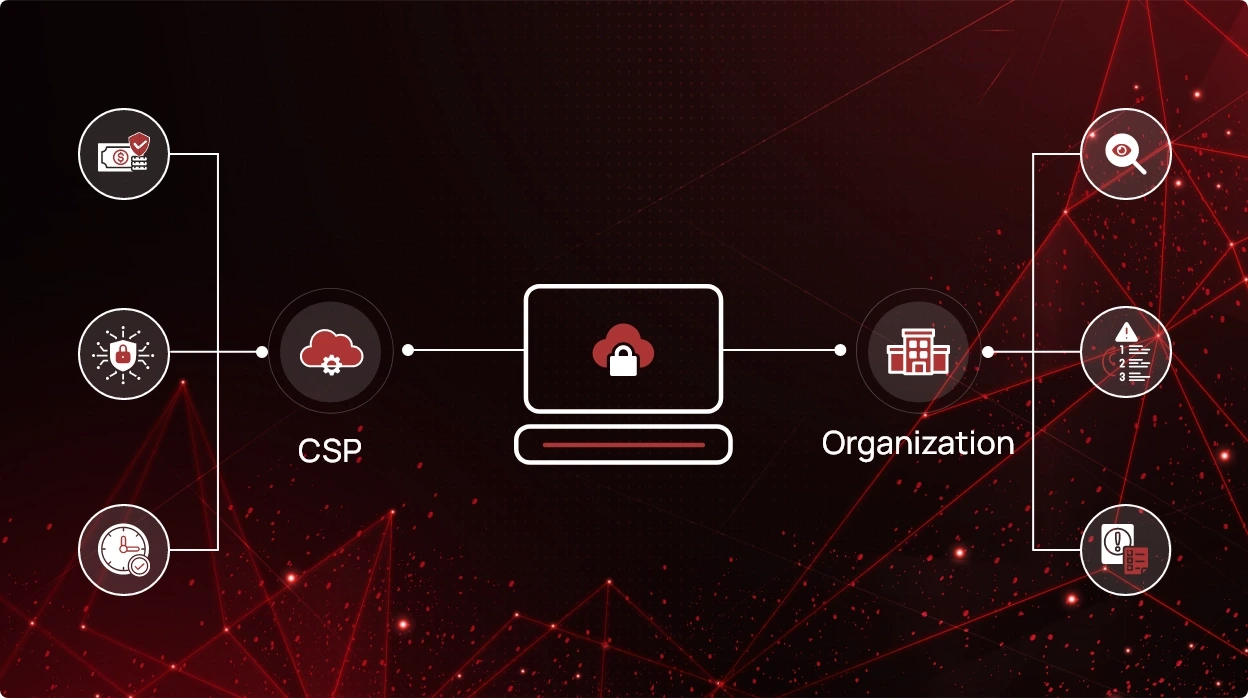Top InfoSec Innovator for SaaS Security Posture Management (SSPM)


CheckRed Editorial
Embracing cloud infrastructure demands a mindset shift, moving beyond traditional elements like firewalls to focus on workloads, buckets, and collaboration with cloud service providers (CSPs). Leading CSPs like Amazon Web Services (AWS), Azure, and Google Cloud Platform (GCP) follow a ‘Shared Responsibility Model’ for defining security roles. This framework clarifies cybersecurity duties between the CSP and the organization, promoting robust security and accountability. As cloud adoption grows, understanding and implementing this model becomes crucial, particularly in multi-cloud setups.

The Shared Responsibility Model outlines the division of security duties between CSPs and the organization. Major providers like AWS, Azure, and GCP have distinct models. For instance, AWS secures the host OS while the organizations handle network controls, IAM, and data. This model is pivotal for cloud security. It ensures active participation of both parties, enhancing clarity, compliance, collaboration, and overall resilience in multi-cloud setups.
In traditional data centers, security responsibility lies solely with the owner. Cloud adoption changes this landscape, with CSPs sharing security duties. As organizations migrate, the CSP’s role in providing secure environments grows significantly. CSPs work to ensure secure platforms, but organizational responsibility remains crucial. This led to the establishment of Shared Responsibility Models, defining boundaries between CSP and organization security domains.
The shift in responsibility to a CSP offers significant advantages. Compared to the comprehensive liability of private on-premises infrastructure, the reduced organizational responsibility in the cloud is a major benefit. Furthermore, sharing security duties yields:
The most apparent advantage is the lighter operational burden. Collaborating with the CSP on cloud security monitoring alleviates the need to manage hardware and operations extensively. When both parties uphold their responsibilities, cloud security can reach new heights of effectiveness.
Implementing the Shared Responsibility Model requires a systematic approach to ensure effective distribution and execution of security duties. Follow these key steps:
By adhering to these steps, organizations can effectively implement the Shared Responsibility Model, establish comprehensive security, and foster a collaborative cloud security approach. Regularly update strategies to stay resilient against evolving threats and compliance changes.
A comprehensive Cloud Security Posture Management (CSPM) tool like CheckRed is pivotal in the implementation and upholding of the Shared Responsibility Model. CheckRed empowers organizations to collaboratively secure cloud environments, leveraging their capabilities to streamline cloud security monitoring.
Here’s how a powerful CSPM tool like CheckRed can enhance Shared Responsibility Models:
Incorporating an efficient CSPM tool into your cloud infrastructure enriches collaboration, bolsters security, and ensures that the Shared Responsibility Model is upheld comprehensively.
Dive into the future with our interactive demo
and explore the possibilities.
Related Posts